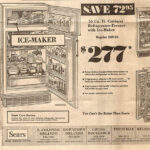Sometimes it’s hard to believe there was a time when the Adobe Creative Suite didn’t exist. Prior to the late 1980s, if you were creating an advertisement or illustration for a magazine, cover art for a video game cartridge, a movie poster or a book cover, you did it the way it’s been done since the dawn of the retail age: ink, paint, X-Acto knives and airbrushing. This article deals with the airbrush, in particular, airbrushed video game art.
The early 1980s were the glory days of the airbrush in commercial video game art. This is partly because many of the games were so simplistic that just showing a screenshot of the game wasn’t going to turn many heads. Marketers needed a piece of art that would tell a story. A detailed piece of fantasy artwork could convince digital adventure seekers to shell out their hard earned cash or allowance. Using an airbrush enabled the artist to create art that was cutting edge, sharp, crisp and dare I say, like it came from a computer. Or whatever people imagined a art from a computer would look like. No other tool gave you the ability to quickly create sci-fi and fantasy settings with all the dimensionality, shadow, shine and glow that made it pop off the page.
Of course the airbrush wasn’t limited to paper media. The movie “Tron” took place almost entirely inside a computer video game and was limited by the same constraints as print media. Only a few seconds of actual computer animation made it into the film. The rest relied on analog technology and heavy use of airbrushed matte paintings. The airbrush made it seem otherworldly. Like it hadn’t been created by hand but had been imagined into existence by some artificial intelligence.
I may be overstating it. What you will see below is a mixed bag. There’s some excellent airbrushed art here, but some is downright amateurish. Given the limited budget some of these independent game publishers were dealing with, I imaging there were a lot of brother-in-laws, cousins and interns creating ad art when they weren’t quite up to the task.
By the way, click the images below to see the full pages they were taken from.
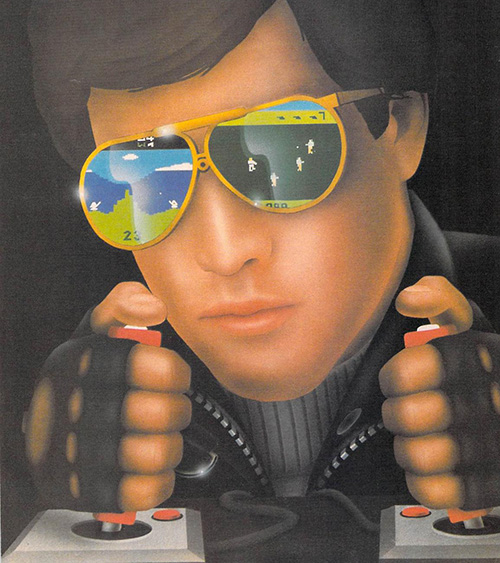
From Electronic Games Magazine, issue 10, 1983.
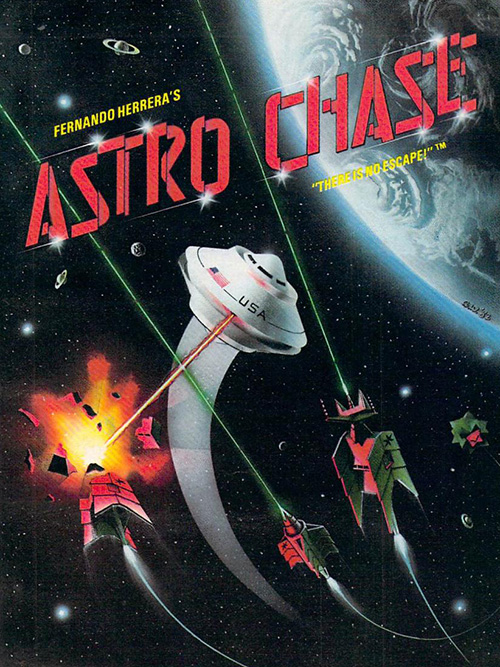
From Compute Magazine, issue 30, 1982
‘Fernando Herrera Strikes Again!’ reads the copy on this Astro Chase ad for the Atari Home Computer system. This artwork feels like like a pulp sci-fi cover to me. The United States flying saucer helps add a 1950s feel to it. The alien ships, with their red color, ribbed wings and black markings, remind me of German World War I biplanes.
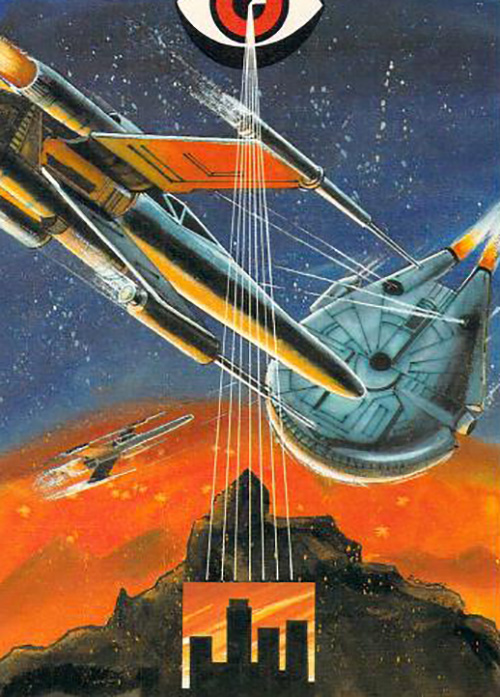
From Compute Magazine, issue 31, 1982.
Sentinel One, for the Atari 400/800 Home Computer, wasn’t a tie in with Star Wars, but they obviously borrowed liberally from the designs of the X-Wing Fighter and Millennium Falcon. It wasn’t terribly uncommon in those days to steal designs from popular science fiction movies for video game art. It was a great way to sucker in unsavvy shoppers.
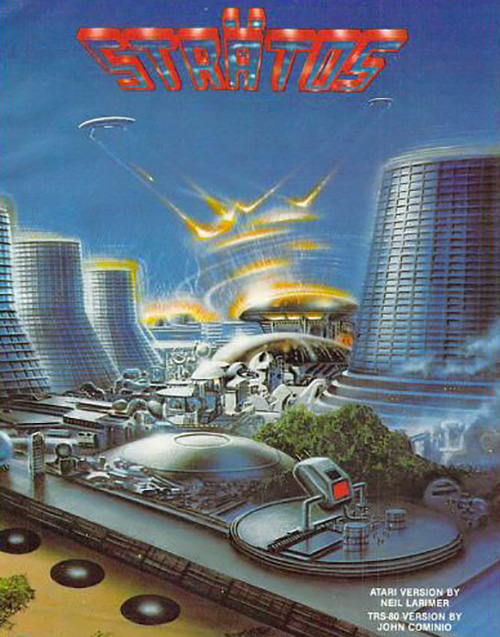
From Compute Magazine, issue 31, 1982.
This is some decent generic futuristic city art for the game “Stratos” by Adventure International. Airbrushing works quite well when doing city scenes, either contemporary or futuristic, because it allows easy use of stencils and straight edge tools to allow clean lines.
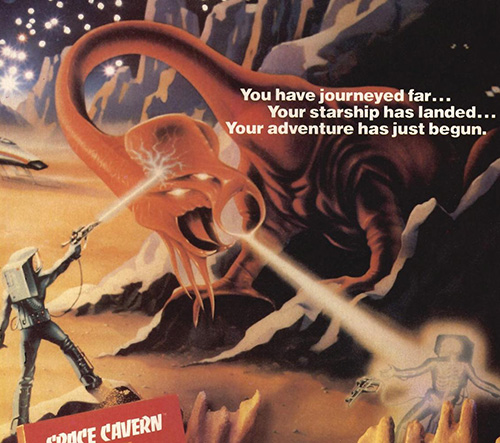
From Electronic Games Magazine, issue 8, 1982.
The space dragon art for “Space Cavern” reminds me of some of the 1960s and 1970s airbrushed fantasy posters that were all the rage. Dungeons and Dragons and psychedelic mushrooms led to some fascinating art during that time period.
You know, when I initially looked at this, I though it was pretty simplistic. But the more I delve in, there’s some interesting stuff going on. From what I can tell, it’s actually a photo of an airbrush painting with some back-lighting and some sculpted foreground elements. The stars behind the mountains appear to be pin-pricks with light shining through. And the rocky features toward the front are sculpted so that the game box can fit into the landscape. Kind of interesting.
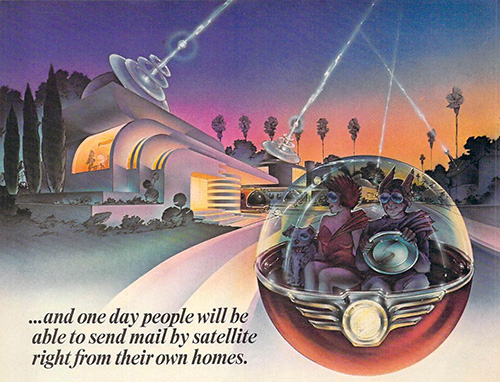
From Compute Magazine, issue 43, 1983.
This ad is gorgeous! One of the best examples I’ve seen in any of these magazines. It’s not for a video game, but for a product called Postman by Sydney Development. It allowed you to send Western Union Telegrams from your PC. It’s like an early form of email, where the recipient still has to pick up his/her letter from the Post Office, ‘at the speed of First Class Mail!’ This product was both ahead of and behind the times. The anachronism is mirrored by its illustration, which features an art deco, retro futuristic setting.
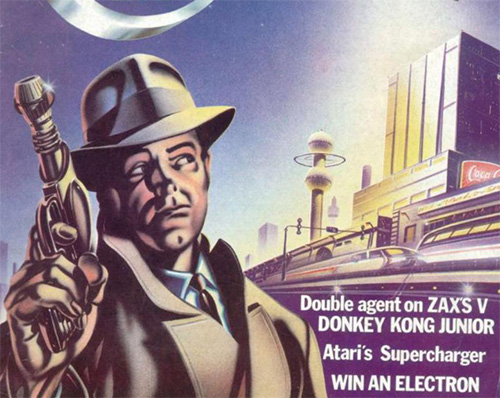
Cover of Computer & Video Games Magazine, July 1983
A cool retro futuristic, film noir design, featuring a fedora clad private dick. This one, you can definitely see a heavy handed use of stencils to create moody shadows on the detective. Totally appropriate, as that’s what film noir is all about. The city in the background is a bit softer and might have had some fine pen work done over the airbrushed base.
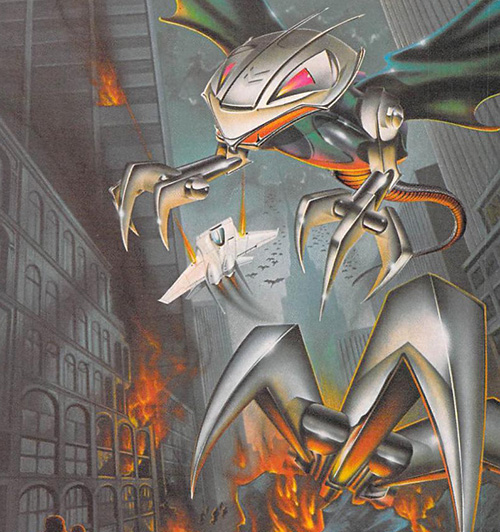
From Electronic Games Magazine, issue 10, 1983.
As mentioned, one thing that airbrushing allows you to do quite easily is to create chrome and shiny effects. As seen in this ad for “Save New York”, the robo-bird-insect-alien attackers have shiny metallic talons. This effect that would be quite easy to do with Adobe Illustrator now, to say nothing of just rendering the whole thing in 3d. But back in 1983, you had very few options. All said, it’s a nice effect and while it looks a bit dated now, it definitely looks like it could have come from or been inspired by a computer.
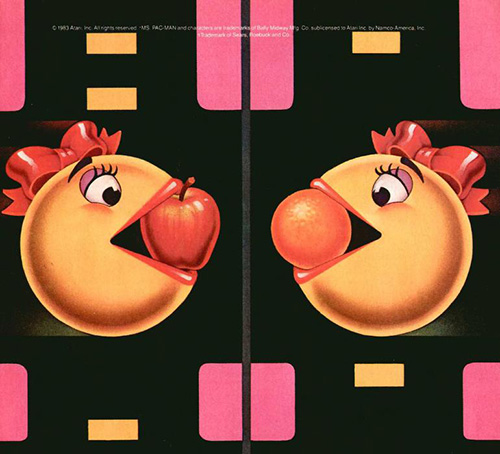
From Electronic Games Magazine, issue 15, 1983.
Awww, Ms. PAC-MAN, not you! Come on Ms. P, don’t let these misogynistic marketing companies make you feel ashamed of your body. I think you’re beautiful exactly as you are and no amount of airbrushing will make you better than who you already are inside.
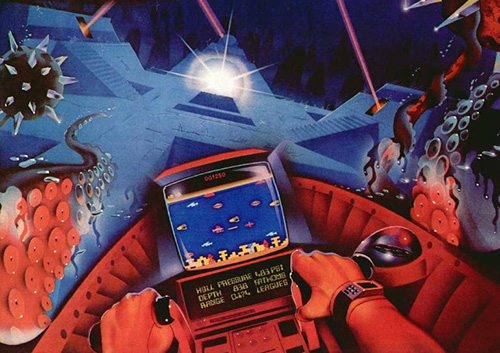
From Electronic Games Magazine, issue 15, 1983.
I wonder what you had to do to claim your prize if you managed to get 100,000 or 500,000 points in “Bermuda Triangle”. Did you have to take a photo of your TV screen showing the score and mail it in to Data Age? More likely, they made this game so damn difficult to play (they even boast about it in the ad copy) that they never expected anyone to claim the reward.
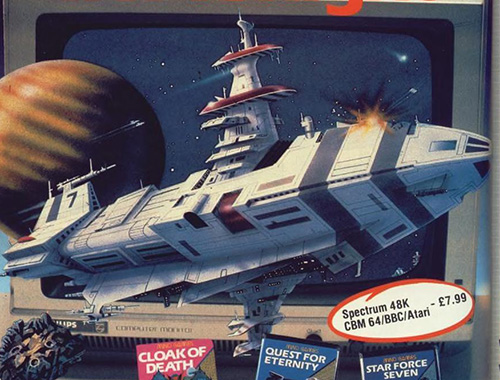
From Big K Magazine, issue 9, 1984.
This is a pretty cool looking spaceship in the art for “Star Force Seven” (starring The Zurgs). It’s channeling a little “Space Battleship Yamato”, a little “Battlestar Galactica” and a little “Star Wars”, while staying generally original.
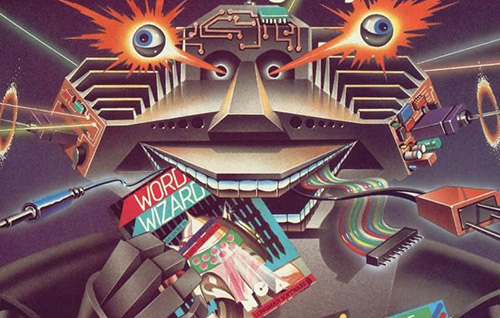
From Big K Magazine, issue 9, 1984.
This robot will eat anything electronic. Ribbon cables, European power cables, 6.35mm audio jacks, you name it. But the thing that really goes to his head? Word games. They make his eyes pop faster you can say, “Stephen Lack in Scanners”.
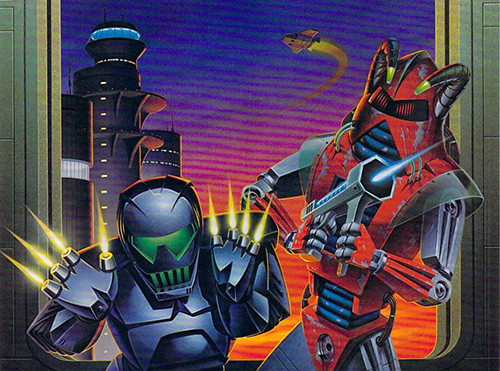
From Compute Magazine, issue 103, 1988.
“Hey hey, it’s me, Chromy Robot Laser Fingers, comin’ at ya with my… scary laser fingers of doom! Better look out, ’cause I’ll burn ya! With my laser fingers.”
Can I point out that this ‘Human-seeking suicide robot’ from “Impossible Mission II” has no knuckles on his laser fingers? So, you know, gripping things is going to be difficult. I guess if his only job is seeking humans and forcing them to commit suicide by, what, making them hold his laser hand to their heads…. You know what, this doesn’t make any sense. Moving on.

From Electronic Games Magazine, issue 10, 1983.
Sexy airbrush art by Video Maniac Sports Accessories! Note the “Censored By Electronic Games Magazine” sticker placed over the woman’s… um… you know. I only have access to scans of this magazine, but I’d really like to know the following: A.) Was this an editorial decision based on the skimpiness of her bikini bottom, or was it meant to titillate the male dominated audience by hiding something that wasn’t really there? B.) Is it printed on, or is it actually a sticker? C.) If it is a sticker, did the entire staff of Electronic Games Magazine have to stay late one night to apply them? Did they tell their loved ones about the important work that made them late? D.) If it was a sticker, what’s the ratio of copies where the sticker is still there to copies where there is now a white fuzzy patch where some curious dude tried to peel it up but failed?
I’ve got tons more of these vintage airbrushed ads and I’ll be bringing them here in the near future.
All of these ad scans come from the Magazine Rack at Archive.org.





